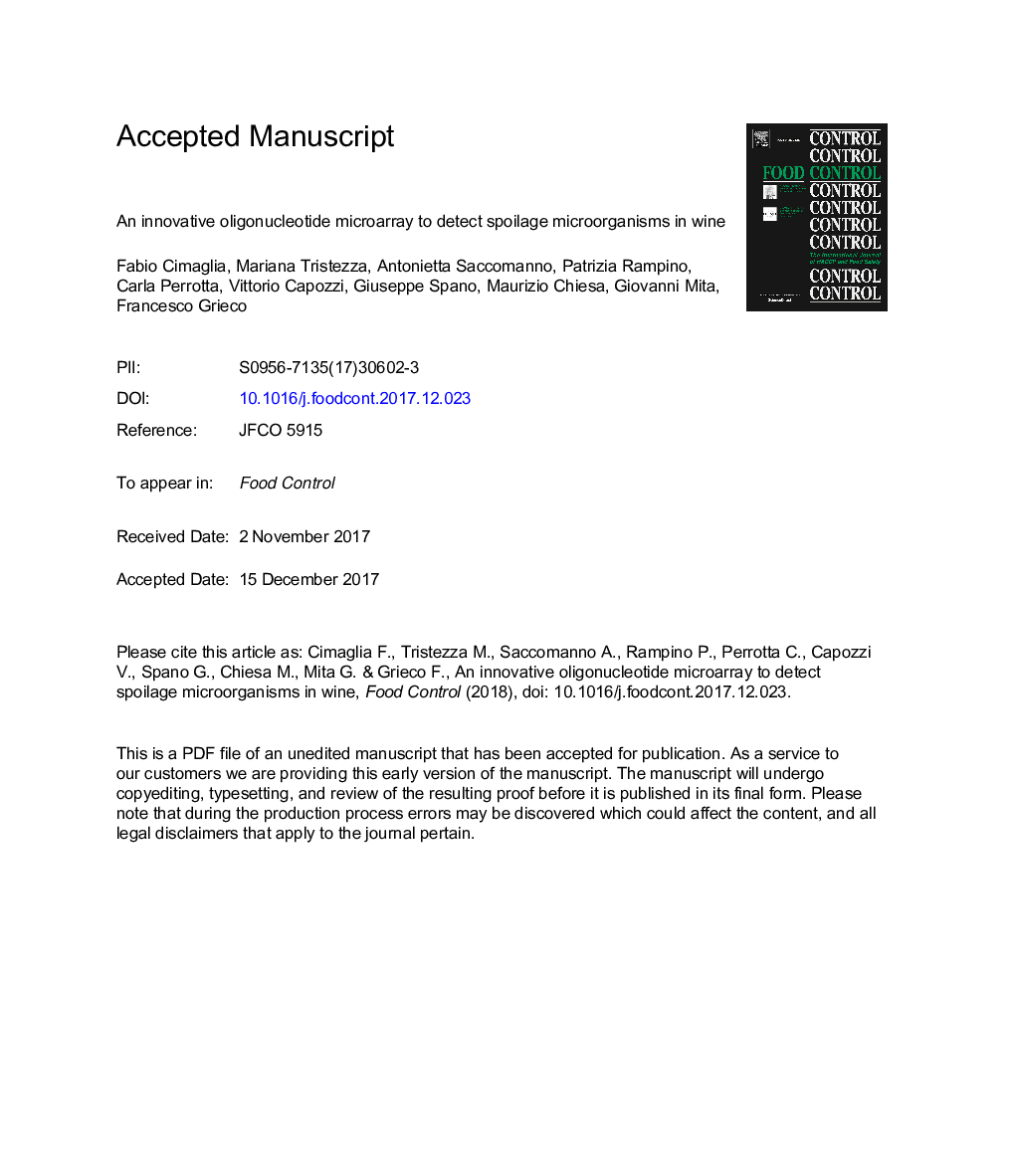| Article ID | Journal | Published Year | Pages | File Type |
|---|---|---|---|---|
| 8888084 | Food Control | 2018 | 49 Pages |
Abstract
The aim of this investigation has been the design and validation of an oligonucleotide microarray in order to detect 17 different wine-spoilage microorganisms, i.e. 9 yeasts, 5 lactic bacteria and 3 acetic acid bacteria species. Furthermore, several strains belonging to these species has been found to produce undesirable compounds for wine consumers. Oligonucleotide probes specific for each microorganism were designed to target the intergenic spacer regions (ISR) between 18S-5.8S region for yeasts and 16S-ITS1 region for bacteria. Prior to hybridization the ISR were amplified by polymerase chain reactions using designed consensus primers. Each oligonucleotide-probes exclusively recognized its target without undesired aspecific cross-hybridizations. Under our experimental condition, the microarray assay analysis was able to detect the amount of DNA equivalent to 24 (Saccharomyces cerevisiae), 160 (Lactobacillus brevis) and 124 (Gluconobacter oxydans) cells, three species chosen as experimental models for the three studied microbial classes. Moreover, a novel procedure that allowed the extraction of genomic DNA from a mixture of eukaryotic and prokaryotic cells from contaminated wine was developed. The obtained results confirm that the microarray assay is able to detect specifically different spoilage microorganisms present in mixture in contaminated wines. For the first time the microarray methodology has been applied for the simultaneous identification of different mixed population of spoilage yeast and bacteria directly isolated from wine, thus indicating the practicability of oligonucleotide microarrays as a contamination control in wine industry.
Related Topics
Life Sciences
Agricultural and Biological Sciences
Food Science
Authors
Fabio Cimaglia, Mariana Tristezza, Antonietta Saccomanno, Patrizia Rampino, Carla Perrotta, Vittorio Capozzi, Giuseppe Spano, Maurizio Chiesa, Giovanni Mita, Francesco Grieco,
